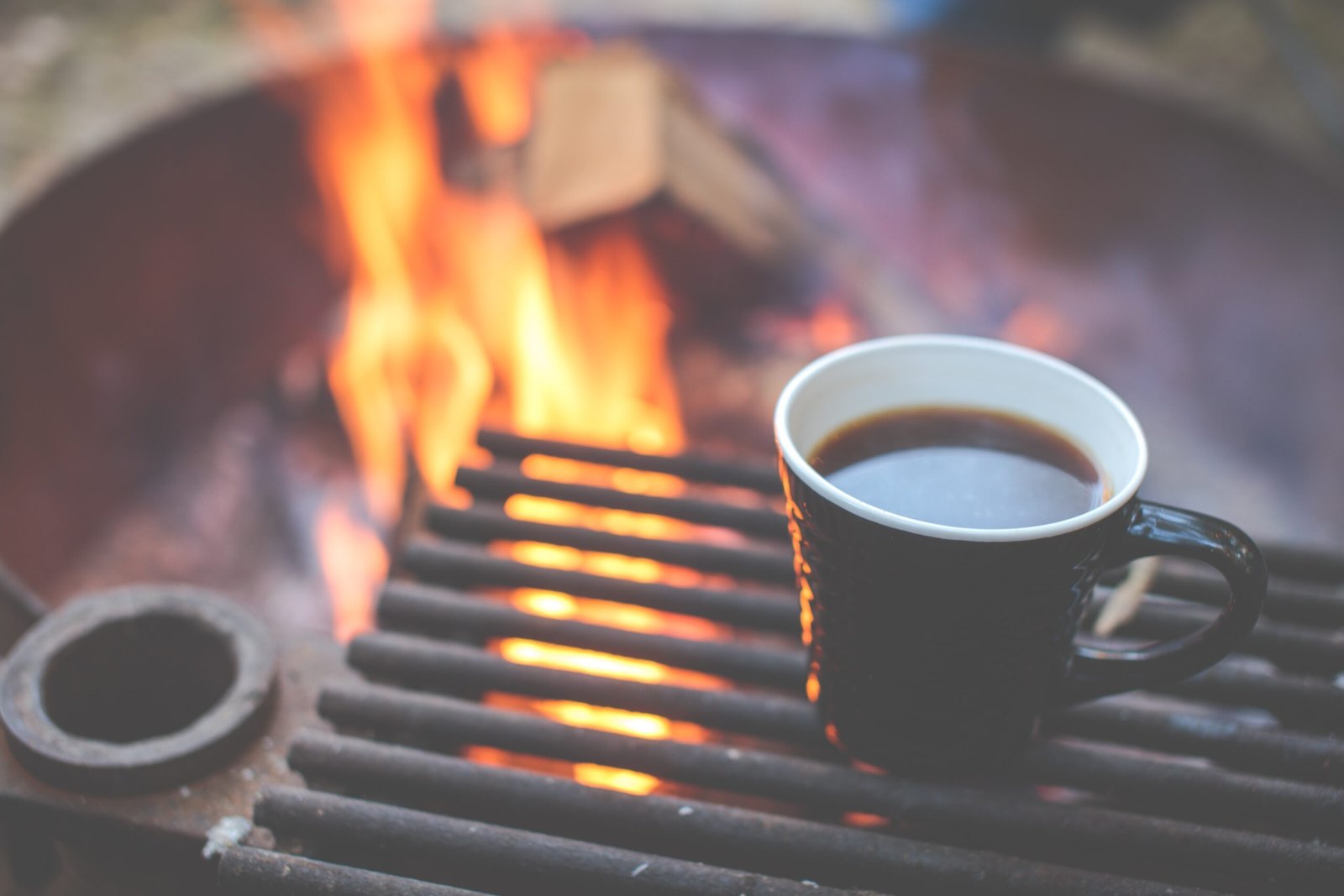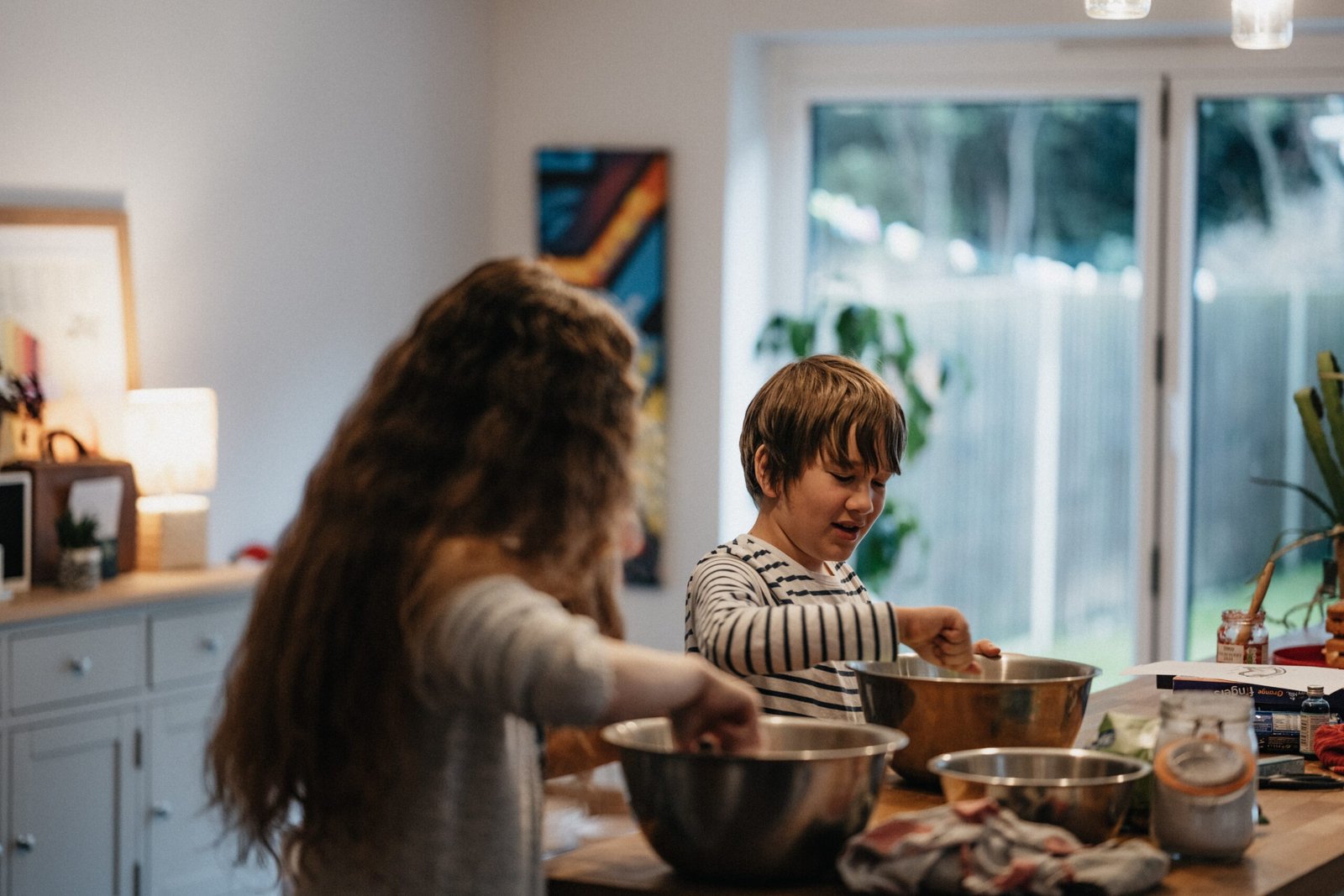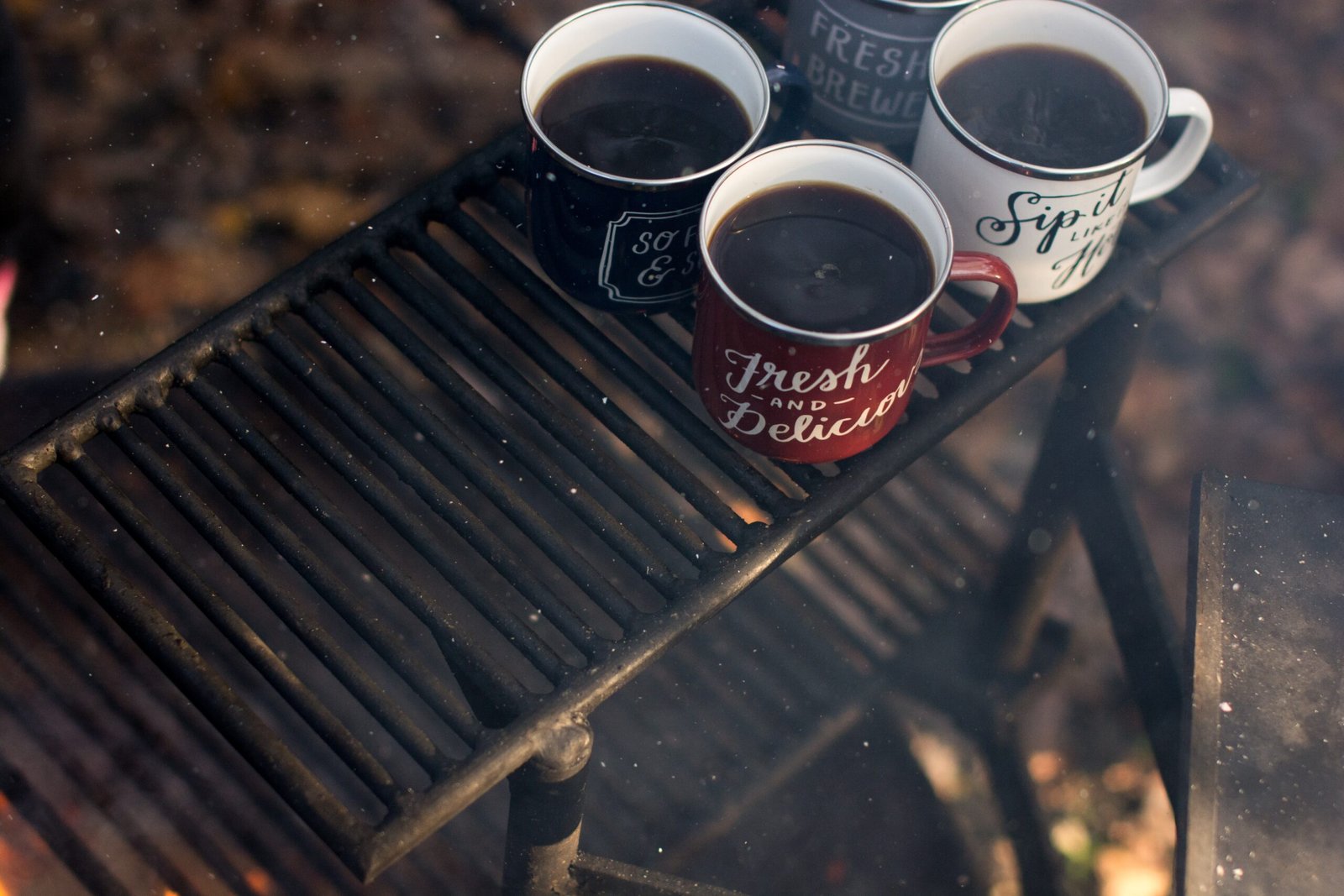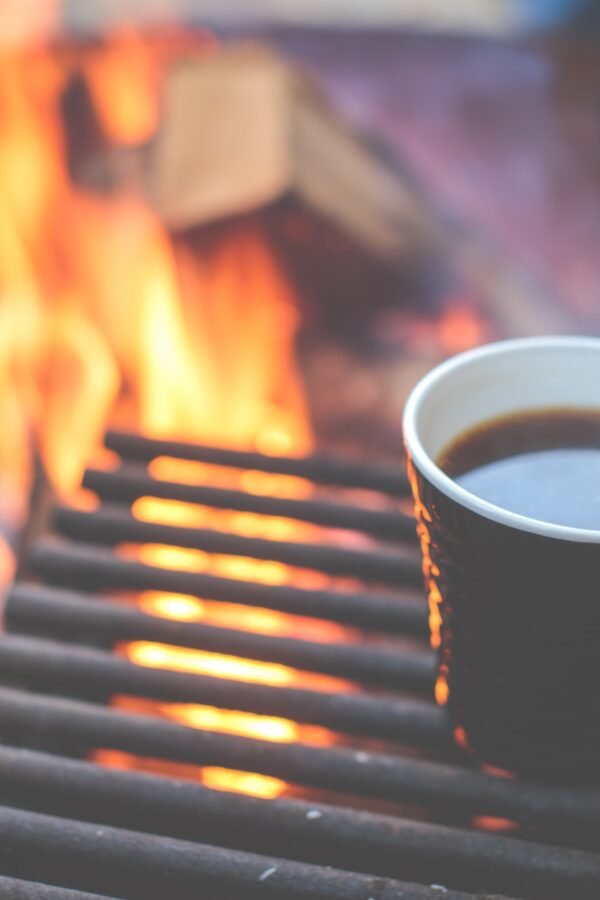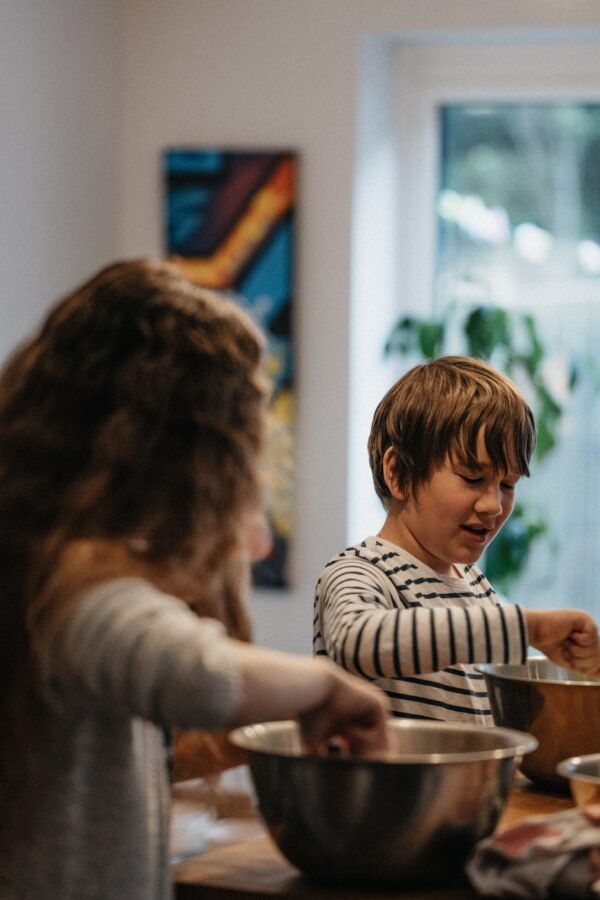Embarking on a camping adventure can be an exciting and fulfilling experience. As you prepare to immerse yourself in nature’s embrace, one crucial aspect that demands attention is what food to bring along. With Tutti Camping, your go-to source for all things camping, you’ll uncover a treasure trove of information and tips to ensure your culinary needs are met during your outdoor expedition. From easy-to-pack snacks to hearty meals that will keep you energized, we’ll guide you on the path to selecting the perfect camping fare. So, let’s delve into the enticing world of camping cuisine and discover what food will make your outdoor escapade truly irresistible.
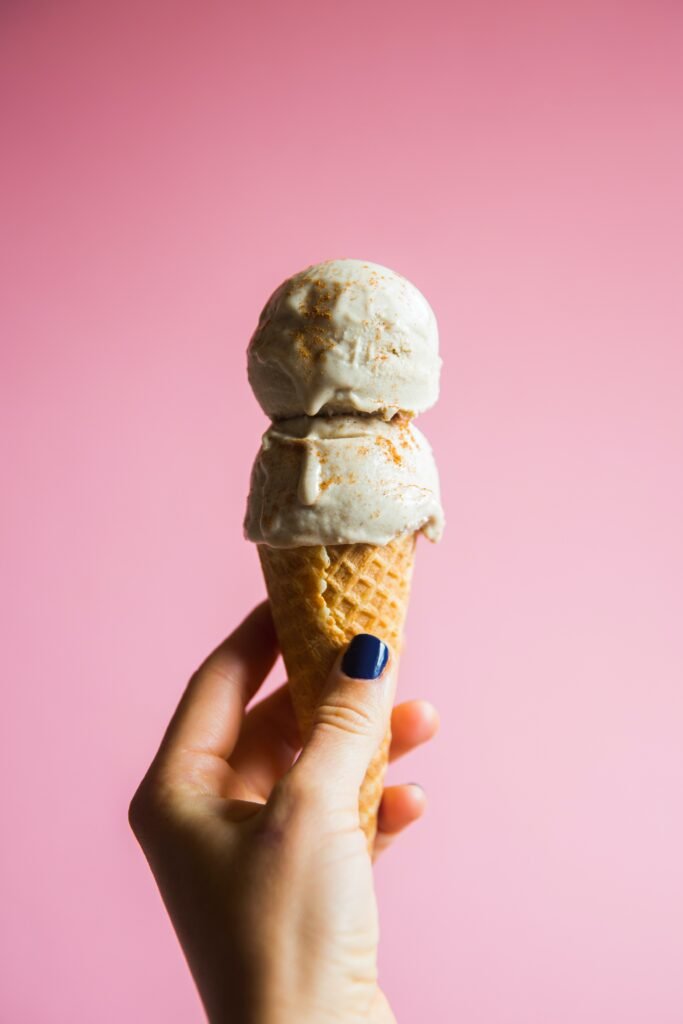
Planning your camping meals
When it comes to planning your camping meals, there are several factors you need to consider to ensure that you have a delicious and enjoyable experience. Taking the time to think about the duration of your camping trip, the weather conditions, your cooking equipment and facilities, as well as any dietary restrictions or preferences will help you make the right choices when it comes to your meals.
Consider the duration of your camping trip
The first thing you need to take into account when planning your camping meals is the duration of your trip. If you’re going on a short weekend trip, you may need fewer meals and snacks compared to a week-long adventure. Take the number of days into consideration and make a rough estimate of how many meals you’ll need, including breakfast, lunch, dinner, and snacks.
Take into account the weather conditions
The weather plays a crucial role in your meal planning. If you’re camping in hot and humid conditions, you’ll want to focus on foods that won’t spoil easily. On the other hand, if you’re camping in cooler temperatures, you can consider more perishable items. Additionally, if rain is in the forecast, you might want to plan meals that can be cooked indoors or under a shelter.
Determine your cooking equipment and facilities
Understanding the cooking equipment and facilities available to you is essential for meal planning. If you’re camping in a well-equipped campground with access to a grill or stove, you’ll have more options for cooking. However, if you’re backpacking and relying on lightweight camping gear, your cooking options may be more limited. Take stock of your equipment and make sure to plan meals that can be prepared with what you have.
Factor in any dietary restrictions or preferences
Whether you have dietary restrictions or are simply picky about what you eat, it’s important to factor in these considerations when planning your camping meals. If you have food allergies or intolerances, make sure to choose foods that are safe for you to consume. Additionally, consider the preferences of everyone in your camping group to ensure that everyone will enjoy the meals.
Essential food items
When it comes to packing food for your camping trip, there are certain essential food items that you should include to ensure that you have a well-rounded and satisfying menu. Here are some categories to consider:
Non-perishable foods
Non-perishable foods are a camping staple as they can be stored for long periods without refrigeration. Some examples include canned goods, dried fruit, nuts, granola bars, and jerky. These items are great for quick snacks or easy meals when you’re on the go or don’t have access to cooking facilities.
Canned goods
Canned goods are a convenient option for camping, as they are easy to pack and have a long shelf life. Consider bringing canned beans, soups, vegetables, and fruits. They can be used as standalone meals or as ingredients in more elaborate dishes.
Bread and wraps
Bread and wraps are versatile options for camping meals. They can be used for sandwiches, wraps, or even toasted over a campfire. Choose bread that holds well in a cooler and won’t easily get squished. Wraps are great for on-the-go meals and can be filled with various ingredients.
Protein sources
Protein is important to keep you fueled during your camping trip. Consider packing items like canned tuna or chicken, beef jerky, nuts, seeds, or protein bars. They can be added to meals or enjoyed as standalone snacks.
Fresh fruits and vegetables
While fresh fruits and vegetables may require some planning and proper storage, they can provide essential nutrients and freshness to your camping meals. Opt for sturdy fruits and vegetables like apples, oranges, bell peppers, and carrots that can withstand the rigors of camping.
Dairy and dairy alternatives
If you enjoy dairy products, consider bringing items like individual containers of yogurt, string cheese, or small cartons of milk. If you have dietary restrictions or prefer dairy alternatives, pack plant-based milk, cheese, or yogurt options instead.
Snacks and treats
Camping is the perfect time to indulge in some snacks and treats. Consider packing items like chips, cookies, crackers, trail mix, or popcorn for those moments when you want a little something extra.
Beverages
Staying hydrated is crucial when camping, so don’t forget to pack beverages. Water should be your main focus, but you can also bring along flavored water, sports drinks, or herbal teas to mix things up.
Basic cooking ingredients
It’s also important to bring basic cooking ingredients that can enhance your meals. These may include cooking oil, salt, pepper, garlic powder, and any other spices or herbs you enjoy seasoning your food with.
Condiments and spices
Don’t forget to bring along your favorite condiments and spices to enhance the flavors of your meals. Some popular choices include ketchup, mustard, mayonnaise, hot sauce, and BBQ sauce. Additionally, bring along salt, pepper, and your preferred spices to add that extra kick to your dishes.
Meal planning for different times of the day
To ensure that you have a well-balanced and satisfying camping experience, let’s break down the meal planning into different times of the day: breakfast, lunch, dinner, desserts, and snacks.
Breakfast ideas
For breakfast, you’ll want to have a meal that provides enough energy to kickstart your day. Consider options like instant oatmeal packets, cereal or granola with powdered milk, breakfast bars, or even pre-made breakfast wraps that you can heat up on a grill or stove. Don’t forget to pack some coffee, tea, or hot chocolate to go along with your morning meal.
Lunch suggestions
Lunchtime during a camping trip often calls for quick and easy meals that don’t require much preparation. Sandwiches or wraps made with your choice of protein, cheese, and vegetables are always a hit. You can also rely on leftovers from the previous night’s dinner or opt for a hearty salad with canned tuna or chicken.
Dinner options
Dinner is usually a time when campers can gather around the fire and enjoy a more elaborate meal. One-pot dishes like chili, pasta, or stir-fry are popular choices. You can also pre-make foil packet meals with a combination of protein, vegetables, and seasonings to be cooked over the fire or on a grill. Don’t forget to bring along some hot dogs and marshmallows for a classic campfire cookout.
Easy camping desserts
For dessert, you can keep it simple with s’mores using graham crackers, chocolate bars, and marshmallows. Another easy option is to wrap some fruit, like bananas or apples, in aluminum foil with some cinnamon and sugar, then cook them over the fire for a warm and sweet treat. If you’re craving something more decadent, bring along pre-made cookie dough or brownie mix to bake over the fire.
Quick and nutritious snacks
Between meals, it’s important to have some quick and nutritious snacks on hand to keep your energy levels up. Trail mix, granola bars, jerky, or fresh fruit are all great options. You can also pack some sliced vegetables with a hummus or yogurt dip for a refreshing and healthy snack.
Tips for food storage and preservation
Proper food storage and preservation are crucial to ensure the safety and freshness of your camping meals. Here are some tips to keep in mind:
Invest in a quality cooler
A quality cooler is a must-have for any camping trip. Look for one that can maintain a consistent temperature and has a tight seal to prevent air from getting in or out. Consider getting a cooler with separate compartments for perishable and non-perishable items.
Use ice packs or frozen water bottles
To keep your cooler cold and your food fresh, use ice packs or frozen water bottles. They not only help maintain the temperature but also serve as a source of cold drinking water as they melt.
Optimize cooler packing
Properly packing your cooler is important for maximizing space and keeping food items cool. Start by placing non-perishable items at the bottom, followed by perishable items that are already cold. Use separate containers or bags to prevent cross-contamination and leaks. Place ice packs or frozen water bottles on top, and try to pack your cooler as tightly as possible to minimize heat transfer.
Keep perishable foods separate
When packing your cooler, keep perishable foods separate from non-perishable items. This helps prevent any potential cross-contamination and allows for easier access to non-perishable foods that may need to be grabbed quickly.
Minimize opening the cooler
Opening the cooler frequently can cause the temperature inside to rise, affecting the freshness of your food. Try to plan out your meals or snacks ahead of time and minimize the number of times you open the cooler. This will help keep your food cool and reduce the risk of spoilage.
Utilize dry and airtight containers
To keep your dry goods, such as snacks and cooking ingredients, fresh and protected from moisture, transfer them into dry and airtight containers. This will not only help with organization but also prevent moisture from affecting the quality of the food.

Ideas for easy camping meals
When it comes to cooking meals while camping, simplicity is key. Here are some ideas for easy camping meals that require minimal preparation and equipment:
One-pot meals
One-pot meals are a convenient option for camping as they require minimal cleanup and can be cooked over a campfire or stove. Consider dishes like chili, stew, or pasta with sauce. Simply cook all the ingredients in one pot and enjoy a hearty and flavorful meal.
Pre-made foil packet meals
Foil packet meals are a fun and delicious way to cook your food while camping. Simply assemble your choice of protein, vegetables, and seasonings onto a sheet of aluminum foil, wrap it tightly, and cook it over the fire or on a grill. The best part is that there’s no cleanup involved – just unwrap and enjoy!
Grilling and barbecuing options
If you have access to a grill or barbecue pit, take advantage of it by grilling up some burgers, hot dogs, or kebabs. You can also grill vegetables like corn on the cob, zucchini, or bell peppers for a nutritious side. Grilling adds a smoky and charred flavor to your meals, enhancing the overall camping experience.
Campfire cooking ideas
Cooking over a campfire is a classic camping experience. Try your hand at cooking meals like foil-wrapped potatoes, campfire nachos, or even pizza using a cast-iron skillet. With some creativity and the right equipment, you can enjoy a variety of delicious campfire-cooked meals.
No-cook meal options
If you’re looking to minimize cooking and cleanup, consider incorporating some no-cook meal options into your camping menu. You can prepare sandwiches, wraps, or salads that don’t require any cooking. Make sure to have ingredients like deli meat, cheese, vegetables, and dressings readily available to assemble your meals easily.
Considerations for camping with kids
Camping with kids adds an extra layer of planning when it comes to meals. Here are some considerations and tips for making camping meals kid-friendly:
Kid-friendly favorites
When planning meals, consider your kids’ favorite foods and try to incorporate them into the menu. This will help ensure that they have meals they enjoy and look forward to. You can include options like hot dogs, macaroni and cheese, chicken nuggets, or peanut butter and jelly sandwiches.
Individualized portions
Kids may have different portion sizes compared to adults. Take this into account when serving meals and prepare smaller portions for the younger campers. This can help reduce food waste and ensure that each child gets an appropriate amount of food.
Easy and safe cooking methods
When camping with kids, it’s important to choose cooking methods that are easy and safe for them to participate in. Simple tasks like assembling foil packet meals, skewering kebabs, or flipping burgers can be a fun way to involve them in the cooking process. Ensure that they are supervised and provide age-appropriate tasks for their involvement.

Tips for reducing waste and cleanup
One aspect of camping that often gets overlooked is reducing waste and minimizing cleanup. By taking some simple steps, you can make your camping experience more eco-friendly and efficient:
Plan meals to minimize leftovers
One effective way to reduce waste is to plan your meals in a way that minimizes leftovers. This can involve portioning ingredients accurately or repurposing leftovers into different dishes. For example, leftover grilled chicken can be used in salads or sandwiches the next day.
Use reusable containers and utensils
Opt for reusable containers and utensils instead of single-use items. Bring along reusable water bottles, food storage containers, and utensils to minimize waste. Pack a dishwashing basin or use your camping stove to wash dishes and utensils properly.
Properly dispose of food waste
When camping, it’s important to dispose of food waste properly to avoid attracting wildlife and to follow the leave-no-trace principles. If you’re camping in an area with designated trash bins, use them to dispose of food waste. Otherwise, pack it up securely and bring it back with you to dispose of properly at home.
Leave no trace principles
One of the core principles of camping is to leave no trace. This means leaving your campsite as you found it, without any signs of your presence. Properly dispose of all trash, including food waste, and leave nature untouched.
Safety considerations when camping
Ensuring food safety when camping is crucial to prevent any illnesses or mishaps. Here are some safety considerations to keep in mind:
Food storage to prevent wildlife encounters
Properly storing your food is essential to prevent wildlife encounters and keep yourself safe. Make sure to store all food items in secure containers or coolers and keep them away from your sleeping area. Hang food high up in trees or use bear-resistant containers if camping in bear country.
Proper cooking temperatures
Cooking food to the proper internal temperatures is important to kill off any harmful bacteria and ensure it is safe to consume. Invest in a food thermometer and follow guidelines for cooking various proteins, such as chicken, beef, or fish.
Safe handling of raw meat
When handling raw meat while camping, it’s essential to practice safe food handling to prevent cross-contamination. Make sure to separate raw meat from other foods, use separate cutting boards and utensils, and wash your hands thoroughly with soap and water before and after handling raw meat.
Water purification methods
When camping, it’s important to have access to safe drinking water. Depending on where you’re camping, the water sources may not be safe for consumption. Carry water purification methods such as water filters, water purification tablets, or boiling water to ensure that the water you drink is free from harmful bacteria or parasites.
Additional food-related camping essentials
Beyond the food itself, there are some additional camping essentials you’ll need to ensure a smooth cooking experience. Here are some items to consider:
Cooking utensils and equipment
Pack essential cooking utensils such as a spatula, tongs, a can opener, a knife, and a cutting board. Depending on your cooking methods, you may also need a grill grate, a cast-iron skillet, or a Dutch oven. Don’t forget to bring pots and pans for cooking meals that require boiling or simmering.
Portable stove options
If you’re camping in an area without access to a grill or campfire, consider bringing along a portable camping stove. These compact stoves run on propane canisters and provide a reliable heat source for cooking meals.
Fire-starting tools
For those planning on cooking over a campfire, bring fire-starting tools like matches, a lighter, or a firestarter. You can also pack some dry tinder to help get the fire going. Additionally, bring along enough firewood to last for the duration of your camping trip.
Camping cookware
Invest in camping-specific cookware that is lightweight and durable. Look for options that are designed for outdoor use, such as cookware sets made of stainless steel or aluminum. These materials are easy to clean and can withstand the rigors of camping.
Cleaning supplies
Don’t forget to pack cleaning supplies to ensure proper hygiene during your camping trip. Bring dish soap, a scrub brush or sponge, and dish towels for washing utensils, cookware, and dishes. Consider packing biodegradable soap to minimize environmental impact.
Ideas for camping-specific snacks and treats
No camping trip is complete without some tasty snacks and treats. Here are some camping-specific ideas to satisfy your cravings:
Trail mix and granola bars
Trail mix and granola bars are convenient and delicious snacks that provide an energy boost during your outdoor adventures. Choose a variety of nuts, dried fruit, chocolate chips, and other goodies to create your own custom trail mix. Granola bars are also a great option for a quick and satisfying snack.
S’mores ingredients and variations
S’mores are a quintessential camping treat that everyone loves. Pack the classic ingredients – graham crackers, chocolate bars, and marshmallows – and enjoy the gooey goodness of s’mores around the campfire. Get creative and try variations, like using different flavors of chocolate or adding peanut butter or sliced fruit to your s’mores.
Campfire popcorn
Popcorn is a fun and easy snack to make over the campfire. Simply pack some popcorn kernels and a small pot or pan with a lid. Place the pot over the fire and shake it occasionally until the popcorn starts popping. Season with your favorite spices or melted butter for a delicious snack.
Fruit kabobs
For a refreshing and healthy treat, prepare fruit kabobs before heading out on your camping trip. Choose a variety of fruits like berries, melons, pineapples, or grapes, and skewer them onto wooden or metal skewers. Enjoy them as a snack or dessert.
Campfire desserts
If you have a sweet tooth, there are endless possibilities for campfire desserts. You can bring pre-made cookie dough or brownie mix and bake them in a cast-iron skillet over the fire. Another option is to wrap banana slices, chocolate chips, and marshmallows in foil and place it over the fire until melted and gooey. The options are as delicious as they are endless.
With these ideas and tips in mind, you’re ready to plan your camping meals and create memorable dining experiences in the great outdoors. Whether you’re a seasoned camper or new to the adventure, thoughtful meal planning and preparation will ensure that you’re well-fed and satisfied throughout your camping trip. Happy camping and bon appétit!


